Garnet is one of the most sought-after gemstones in the world – and not just because it's January's birthstone!
This spectacular stone has many valuable traits that make it desirable to collectors, including its multitude of colours. Garnets make up a group of closely related minerals and, therefore, come in many colours, including orange, pink, green, brown, black, and colourless, as well as the iconic red that we all know and love.
But the most striking thing about these vibrant colours is that they all form completely naturally! Garnets are often associated with red, but their many magnificent hues all come from traces of various chemical elements. Every gemstone has a unique chemical composition, and it is the presence of these elements that gives them their stunning colours.
HOW DO GARNET STONES GET THEIR COLOUR?
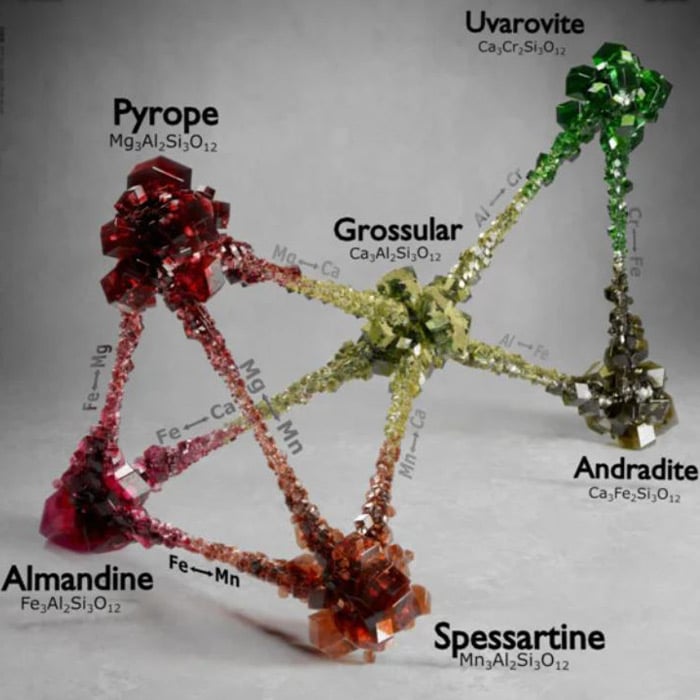
*infographic courtesy of Lina Jakaite
Each Garnet is characterised by the same main chemical formula; however, the formula changes slightly for each Garnet variety with the addition of different chemical elements like iron, magnesium, or aluminium.
Ultimately, the presence of each of these elements determines the stone's vibrant colour, and the switching of one single component can change the gem's appearance entirely. The image above illustrates how this works.
To simplify this further, let's look at each Garnet variety and how it is made up.
Almandine
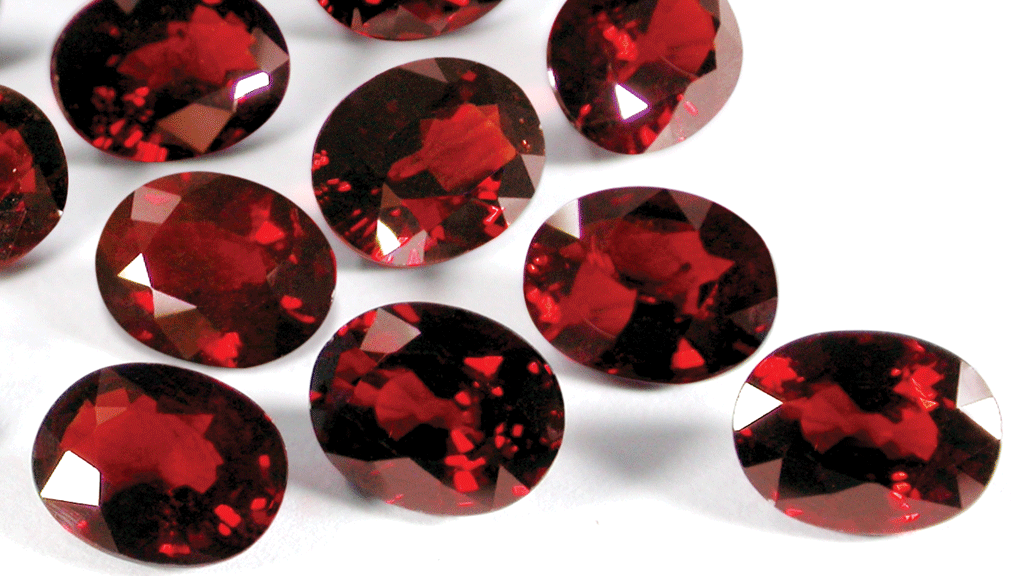
Made of iron and aluminium, Almandine showcases a beautiful purplish-red colour, similar to the colour of wine. This hue is remarkably vibrant, making Almandine Garnet types one of the most sought after among collectors.
For Almandine Garnet jewellery, explore our Rajasthan selection.
Pyrope
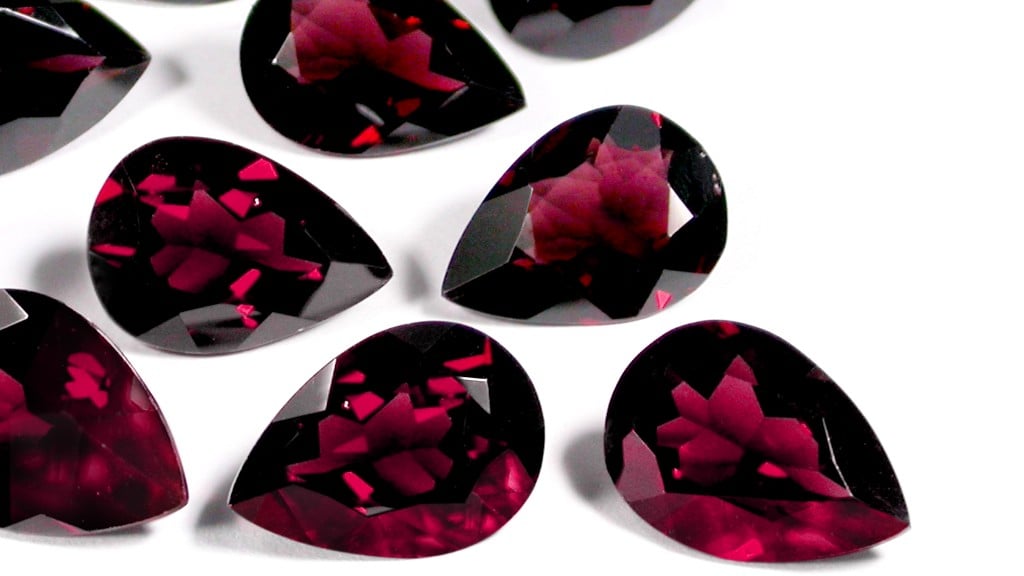
Arguably seen the most often, the Pyrope variety of Garnet has a fiery red colour that frequently leads people to confuse the stone with Ruby. Its colour comes from the presence of chromium, but Pyrope also contains traces of magnesium.
When magnesium is switched with manganese, you end up with the chemical composition of the Spessartite variety, so the stone will appear orange.
For Pyrope Garnet jewellery, explore our Malawi and Comeria selections.
Spessartite
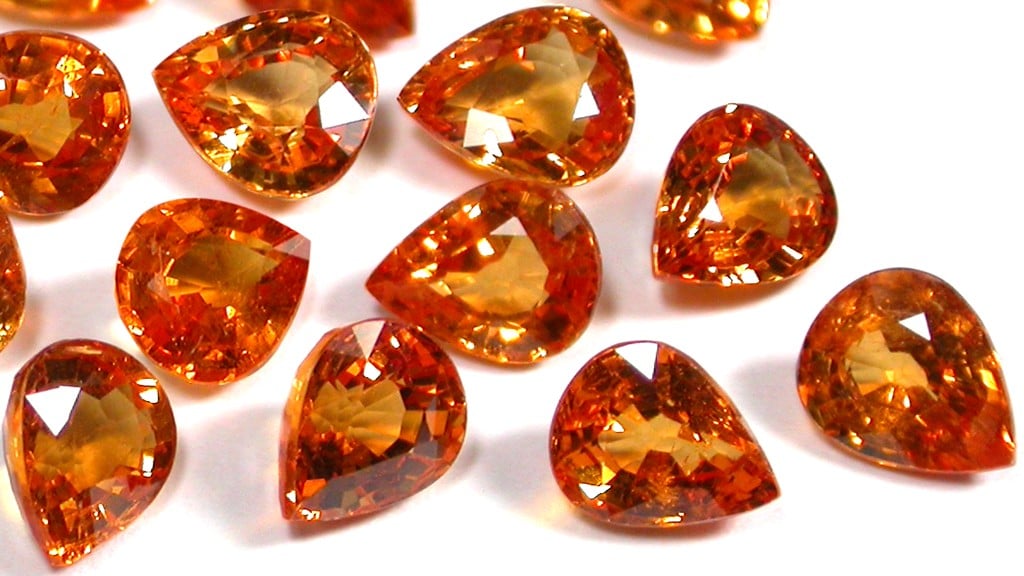
As we mentioned above, the Spessartite Garnet variety offers a warm orange colour, thanks to the presence of manganese and aluminium. Its enchanting brilliance is due to its high refractive index, and its appearance alone makes it one of the world's most distinguished Garnet varieties.
For Spessartite Garnet jewellery, explore our Mandarin selection.
Grossular
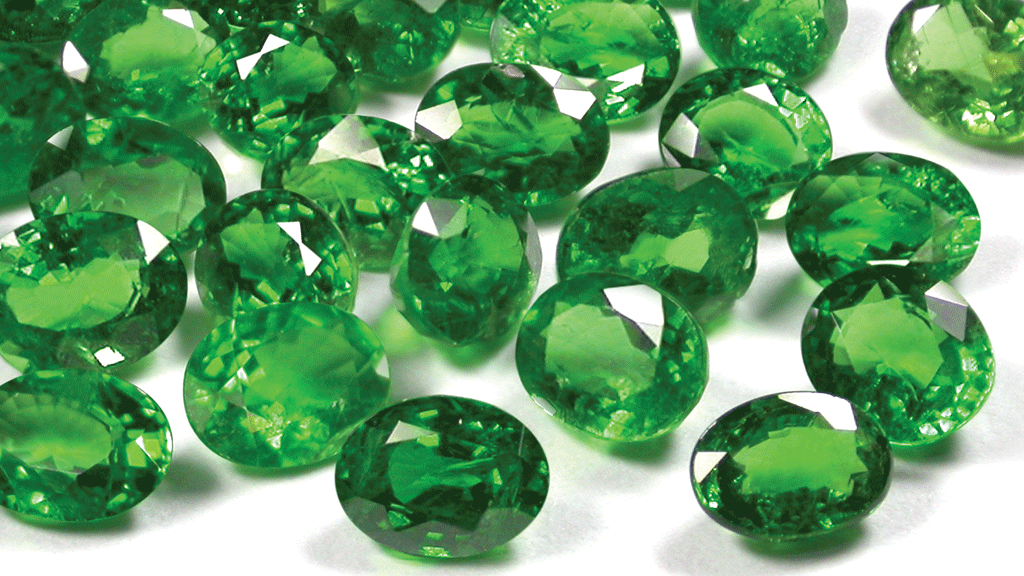
Moving through the various colours, we have Grossular, a variety with a calcium-aluminium composition. Grossular offers a vibrant yellowish-green colour, and varieties like Mali and the iconic Tsavorite sit under the Grossular Garnet umbrella.
However, additional traces of chromium and vanadium provide Tsavorite's exceptional green colour. These elements are also responsible for the magnificent hue of Emerald.
For Grossular Garnet jewellery, explore our Mali and Tsavorite selections.
Andradite

Andradite, like Grossular, has several varieties, and its colour is formed from the presence of calcium and iron. Demantoid Garnet is by far the most desirable Andradite variety; it has a high refractive index, which gives it a quality like no other, and the gem's dispersion (where each colour travels through the stone at different speeds when white light passes through it) gives it a fire that rivals that of Diamond.
For Andradite Garnet jewellery, explore our Demantoid selection.
Uvarovite
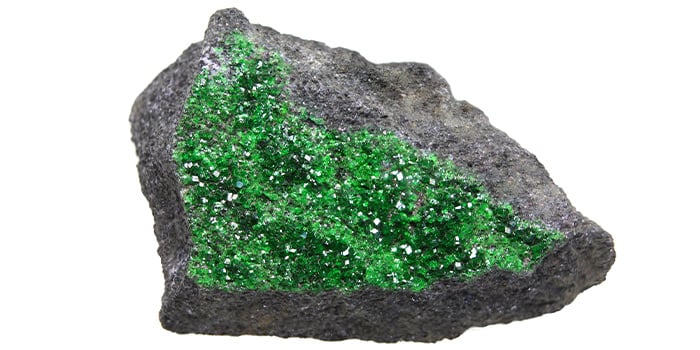
Leaving the rarest until last, Uvarovite is a radiant green Garnet variety that is more of a collector's stone than anything else. Finding a gem-quality stone like this isn't common, so chances of seeing Uvarovite set into fine jewellery are very few and far between. But, regardless of its rarity, it has a beautiful grass-green hue that can be admired from near or far.
WHAT IS THE MOST COMMON GARNET COLOUR?
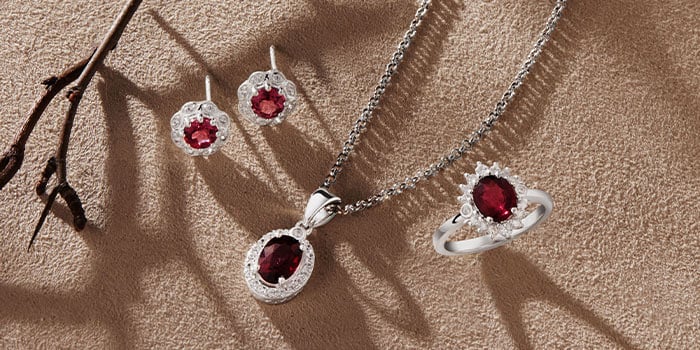
Historically, Garnet is associated with the colour red, and gem-quality stones like these are found in abundance worldwide. Of all the Garnet colours, red is by far the most common; it is sourced from a plethora of locations, such as Sri Lanka and Madagascar.
South Africa is also a large Garnet supplier, as well as Tanzania, Kenya, India, China, Myanmar, Australia, Brazil and the USA.
WHAT IS THE RAREST GARNET COLOUR?
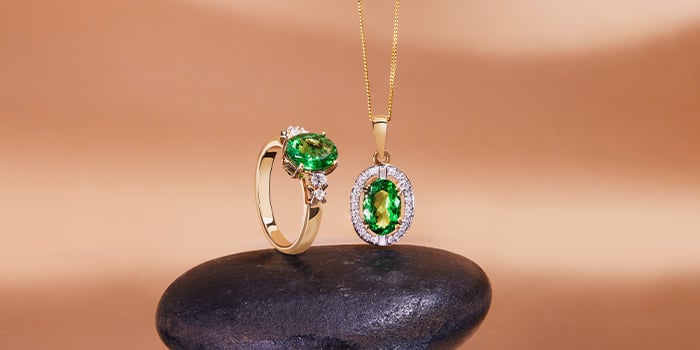
Green and blue are the rarest Garnet colours, with Tsavorite being the rarest variety of all. Shortly after its discovery by Campbell R. Bridges in northern Tanzania in 1967, the gem became temporarily inaccessible after the Tanzanian government nationalised all mines and Bridges was made to leave.
However, out of sheer determination, Bridges returned to Africa in 1971 and traced Tsavorite Garnet over the Tanzanian border into Kenya. After finally rediscovering it underneath Kenya's Tsavo National Park (hence the name Tsavorite), it became one of the rarest gemstone finds in the world.
FINAL THOUGHTS
Although a common gemstone for enthusiasts and collectors, Garnet is unique in its own way due to its stunning array of varieties. Its colours rival those of other gemstones worldwide, and the gem will continue to be a sought-after favourite for generations to come.
To add a brand-new piece to your collection, shop our full selection of Garnet jewellery. Plus, read our blog to learn more about this remarkable gemstone.

